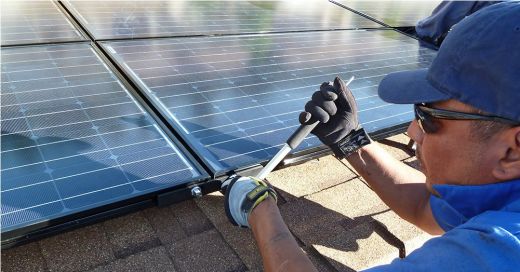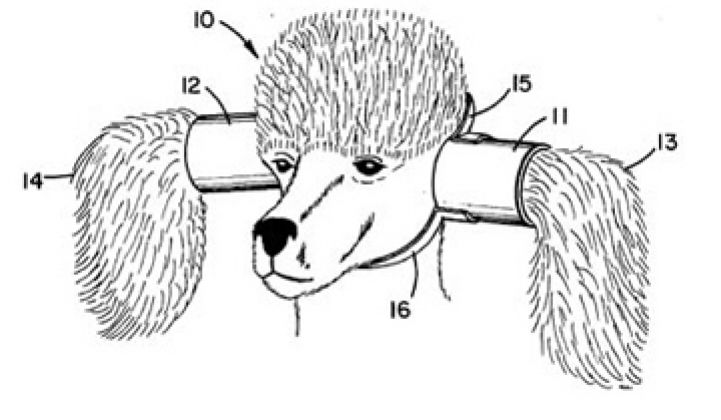Just yesterday I wrote an article on Zep Solar's innovative solar mounting solution -- prior to learning of accusations of patent infringement and a complaint with the U.S. International Trade Commission by Westinghouse Solar against Zep and Canadian Solar.
Westinghouse Solar (Nasdaq: WEST), formerly known as Akeena Solar, has accused Zep Solar and Canadian Solar of infringing on its intellectual property rights, according to a press release.
I managed to get in touch with both Zep Solar and Westinghouse Solar on the phone.
Zep's comments:
- The two patents ('800 and '641) referenced in the complaint against Zep Solar by Westinghouse Solar have both been fully rejected by the U.S. Patent and Trademark Office.
- Zep Solar's patent protections pre-date all Westinghouse Solar patents.
- Anyone can file an ITC action; having filed an action is in no way a validation from the ITC as to the merits of the action.
Mike Miskovsky, the CEO of Zep, is the former General Manager for the U.S. division of Canadian Solar (a Chinese-based firm, despite its name).
Westinghouse Solar, helmed by CEO Barry Cinnamon, is a public company with revenue of $8.7 million in 2010 and losses of $6.4 million. Westinghouse Solar, claims to have "pioneered the concept of solar panels in which the racking, grounding and wiring is integrated into the solar panel itself." The firm was once a solar installer but is now a designer and manufacturer of the Andalay brand AC solar module. The company gave a 2011 revenue guidance in the range of $25 million to $30 million. Actual revenue for the first two quarters of 2011 was $4.8 million, and 2011 revenue guidance was dialed back to $15 million to $20 million.
The firm suggests a "do-it-yourself" install and uses microinverters in its kit. Hopefully, the homeowners performing the do-it-yourself install are near well-staffed emergency rooms with experience treating head trauma and electrocution.
"Westinghouse's ITC filing is a means of addressing the alleged infringement by seeking an order permanently barring Zep Solar and its licensees such as Canadian Solar from importing products into the United States that infringe Westinghouse Solar's '800 and '641 patents," according to the company.
I spoke with Cinnamon, who said, "The ITC takes these complaints very seriously, and the fact that they accepted the claims means that the ITC considers there to be some basis." Cinnamon added that the positive side of this shows the evolution of the industry and the value of this technology. The CEO has had his own share of complaints filed against him.
We covered another greentech intellectual property case involving American Superconductor (AMSC) and its former customer, China-based Sinovel Wind Group, last week.
***
Here's the article from yesterday detailing Zep's product and company:
Innovation in solar is not limited to thin film deposition or cool inverter electronics.
In fact, it's companies like Zep Solar, with innovations in balance of system and hardware, that can make impacts in the labor of installing solar panels -- and ultimately the all-in cost of solar systems.
Mounting systems can account for seven percent to 10 percent of the cost of the entire installed solar system. That borders on the same proportions as the $6 billion inverter market. And that makes mounting systems a large growth market with its own set of innovations and competitive pressures.
Zep Solar is able to demonstrate a 4X to 5X improvement in the speed of installing the solar array compared to a competitor's rail-based system. That translates to lower labor costs and lower systems costs.
Zep's innovation is the "Zep Groove" -- making the panel itself part of the racking hardware via a specially grooved frame, eliminating rails and using the module frame as the structural and mounting element. That special frame does not come from Zep -- it comes from a panel vendor that has licensed the Zep design and the aluminum die. It's quite a sales victory for an established vendor to adopt a standard from a startup. One hopes that the Chinese vendors will honor the patents and license.
Zep's revenue comes from the sale of hardware to support the Zep Groove and to a lesser extent the licensing piece. The firm already has nine licensees, including top solar vendors such as Yingli Solar, Canadian Solar and Trina Solar. Most of the startup's business has been in the U.S.
Zep essentially eliminates the need for grounding; grounding occurs as a result of making the structural connections between the modules.
The model that Daniel Flanigan, VP of Marketing, put forth was the Zep Groove as USB port, enabling a wide range of solar balance of system pieces such as grounding, wiring, and microinverters or panel-level electronics to be more easily mounted and assembled. The relative ease of mounting also potentially opens up the craft of solar installation to a wider range of tradespeople such as roofers and electricians.
Zep Solar, funded by venture firm Aquillian investments, is looking to disrupt the business of incumbents such as Unirac and Schletter. Other players in this market include Sunlink, Panel Claw, and PV Installation.
A custom Zep tool helps install the panels.

Zep's founder and CTO, Jack West, commuting to work. Really. West commutes to work in a kayak.




